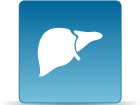1,1-Dichloroethylene (1,1-DCE)
CASRN 75-35-4 | DTXSID8021438
- Toxicological Review (PDF) (72 pp, 531 K)
- IRIS Summary (PDF) (37 pp, 225 K)
Noncancer Assessment
Reference Dose for Oral Exposure (RfD) (PDF) (37 pp, 225 K)
Last Updated: 08/13/2002
| System | RfD (mg/kg-day) | Basis | PoD | Composite UF | Confidence |
|---|---|---|---|---|---|
| Hepatic | 5 x 10-2 | Liver toxicity (fatty change) |
BMDL10
: 4.6 mg/kg-day |
100 | Medium |
Reference Concentration for Inhalation Exposure (RfC) (PDF) (37 pp, 225 K)
Last Updated: 08/13/2002
| System | RfC (mg/m3) | Basis | PoD | Composite UF | Confidence |
|---|---|---|---|---|---|
| Hepatic | 2 x 10-1 | Liver toxicity (fatty change) |
BMCL10
(HEC): 6.9 mg/m3 |
30 | Medium |
Cancer Assessment
Weight of Evidence for Cancer (PDF) (37 pp, 225 K)
Last Updated: 08/13/2002
| WOE Characterization | Framework for WOE Characterization |
|---|---|
| C (Possible human carcinogen) | Guidelines for Carcinogen Risk Assessment (U.S. EPA, 1986) |
| Suggestive evidence of carcinogenicity, but not sufficient to assess human carcinogenic potential (Inhalation route) | Revised Draft Guidelines for Carcinogen Risk Assessment (U.S. EPA, 1999) |
| Data are inadequate for an assessment of human carcinogenic potential (Oral route) | Revised Draft Guidelines for Carcinogen Risk Assessment (U.S. EPA, 1999) |
- Under the 1986 cancer guidelines (U.S. EPA, 1986), 1,1-DCE is assigned to Group C, possible human carcinogen. Under the draft revised guidelines for carcinogen risk assessment (U.S. EPA, 1999), EPA concludes 1,1-DCE exhibits suggestive evidence of carcinogenicity but not sufficient evidence to assess human carcinogenic potential following inhalation exposure in studies in rodents. Male mice developed kidney tumors at one exposure in a lifetime bioassay, a finding tempered by the absence of similar results in female mice or male or female rats and by the enzymatic differences (i.e., CYP2E1) between male mice and female mice, male and female rats, and human kidney cells. Limited evidence of genotoxicity has been reported in bacterial systems with metabolic activation. The data for 1,1-DCE are inadequate for an assessment of human carcinogenic potential by the oral route, based on the absence of statistically or biologically significant tumors in limited bioassays in rats and mice balanced against the suggestive evidence in male mice in a single bioassay by inhalation and the limited evidence of genotoxicity. The human epidemiological results on the carcinogenicity of 1,1-DCE are too limited to draw useful conclusions. EPA concludes that the results of kidney tumors in one sex and one exposure in a single species of rodents are too limited to support an exposure-response assessment.
- This may be a synopsis of the full weight-of-evidence narrative.
Quantitative Estimate of Carcinogenic Risk from Oral Exposure (PDF) (37 pp, 225 K)
Not assessed under the IRIS Program.
Quantitative Estimate of Carcinogenic Risk from Inhalation Exposure (PDF) (37 pp, 225 K)
Not assessed under the IRIS Program.
Additional EPA toxicity information may be available by visiting the following sites:
- Human Health Benchmarks for Pesticides (HHBP). This database provides human health benchmarks for pesticides that may be present in drinking water.
- Office of Pesticide Programs Pesticide Chemical Search. This database provides links to health effects information and registration status for pesticides.
- Chemistry Dashboard. This database provides information on chemical structures, experimental and predicted physicochemical, and toxicity data.
You will need Adobe Reader to view some of the files on this page. See EPA’s PDF page to learn more.


